(The text of this article was written by Harry Rolnick. It originally appeared in the April 1980 edition of the Peninsula Group magazine, and is reproduced here with their permission. The illustrations are from Gwulo's contributors.)
One fateful day in the autumn of 1912, Hong Kong’s end began. A group of the most prominent citizens of the Colony – incensed at the fact that their horses shied away from horseless carriages, irate that the public weal was endangered, that human life was fated to die out and totally confused by the newest juggernauts of the road – signed what was called a “monster petition” and presented it to the Governor.
Motorcars (said the petition) were a danger to Hong Kong. They were to be eliminated immediately. The dozen-odd cars which had found their way into the Colony were henceforth to be exported out of the Colony.
The Governor took the petition, read it carefully, agreed that something should be done…but did not believe that motor cars should be eliminated completely…
Thus Hong Kong’s fate was sealed.
The dozen-odd little chug-chug’s multiplied tenfold by 1915. And when those people with country houses on the southern side of Hong Kong island no longer felt that transportation by sedan-chair was the ultra plus non for travel, automobiles, those new-fangled noisy contraptions, were the and only the means of getting around.
Except for one slight problem: no road. So the evolution continued inexorably. First sedan chairs, then cars, then roads envisaged for the wooden sylvan glades of southern Hong Kong – and then, just as inevitably, came The Repulse Bay Hotel.
This year (1980) marks the 60th anniversary of The Repulse Bay Hotel’s official opening – a positively hoary age, in Hong Kong’s terms, for the grand old place. Yet, to rephrase the old age, had there been no Repulse Bay Hotel, it would have been necessary to build one. After all, where else could ladies and gentlemen of quality in colonial Hong Kong have spent their own Roaring 20’s?
The Hong Kong Hotel Company (later The Hongkong and Shanghai Hotels, Ltd. – parent company of The Peninsula Group) did own the old Hongkong Hotel on Pedder Street, and there were a few other hotels around the Colony. But obviously, when the first road was to be built from Central to Repulse Bay and later Stanley, one hotel had to stand there as a monument to…well, to the good life.
Before the road, came the hotel itself. Probably to the dismay of that elite which had its country homes in the area, an East Wing was constructed around 1915 or 1916. And as the Great War drew to an end, gradually more rooms were constructed – though as yet no road was built to The Repulse Bay.
No road, but…but was this a plane coming to land here? Apparently, even before the horseless carriage, the “birdless carriage” invented but a decade before by the Wright Brothers, found itself literally at Repulse Bay’s watery doorstep.
In 1918, with five American surplus seaplanes, a Hong Kong-Macau air transport was inaugurated, departing from Repulse Bay itself. A few drinks on the verandah (obviously to boost up one’s courage), and off they would go.
It seemed for a while that The Repulse Bay would be limited to the sedan chair and the seaplane. Then the inevitable happened. The manager of The Hotel, one J.H. Taggart, acquired his own car – the first Rolls Royce in the Colony (and a white one at that). Naturally, a road was called for…if only to show off the car.
In 1919, there were no less than 400 cars. And The Hong Kong Hotel Company finishing off the first stage of The Repulse Bay, prompted the government to finish the road, so that they could have an official grand opening on January 1, 1920.
The road was completed, the hotel was completed. And in those oft-quoted phrases from the South China Morning Post, on January 5, 1920, it was exclaimed that “it is doubtful if anywhere in the East there can be found a more desirable spot for rest and recreation than The Repulse Bay, or a more elegantly equipped establishment catering for the comfort of the public.”
January 1 must have been quite a day for pre-Tatler socialites. Not only were they impressed with The Hotel, with its frontage of 150 feet, with its grand entrance, and its brilliant decorations. They danced till dawn to the strains of “The Repulse Bay Waltz”, they watched “great streams of automobiles rushing over the new road,” and they compared status. It seems that the road from The Hotel actually went all the way to Stanley. But only the highest officials were allowed to take it.
The cars came and went on that wonderful January 1st, and a few days later, special buses were enlisted to leave from Pedder Street’s Hong Kong Hotel (it took an hour to make the trip – probably twice as fast as the same distance on a summer Sunday in the 1970’s).
Those not invited to the grand opening were not denied their social do’s though. A “tea dansant” was to be held the following Saturday with dining and dancing until midnight. On Sunday, orchestral concerts were to be heard, along with dining on the verandah, and within a few weeks, The Repulse Bay was really the only place to go, darling, for anything!
A description circa 1920 is very much like The Hotel today. “It is approached by a well-made road, leading to the main steps, in front of which is a miniature Italian Garden, artistically laid out and provided with a fountain. From the steps the visitor reaches a very spacious balcony 14 feet wide which runs the entire length of the front. The hall, with its floor space of 3,500 square feet, runs into a verandah. Each bedroom will be 20 feet square (the rooms weren’t quite completed when this was written), and each has its own bathroom “with white glazed tiles and hot and cold water.”
With the undoubted success of The Repulse Bay, The Hong Kong Hotel Company started work three years later on The Peninsula Hotel. But such was the labour unrest in Shanghai at the time this was temporarily discontinued, and a 52-room annex was started on The Repulse Bay, giving it 84 rooms.
The amazing thing about The Hotel was that between 1920’s grand opening, and the rather less than grand closing in 1941, so little was changed. Yes, the new annex had been built, and yes, the little saplings in the front garden were growing into enormous Flame-of-the-Forest trees. Traffic increased, especially on the weekends, and the back garden – almost 200,000 square feet of flowers, shrubs, herbs – became grander and grander. The Hotel took over the Lido for development and maintained the Beach Road for a while. But basically, they wanted to confine themselves to making The Hotel itself a grand and glorious place.
How could (or can) one compare it? The present manager, Daniel Reeg, says that the closest comparison would be an English country mansion transported to the Orient. Others say that the style of The Hotel overlooking one of the most picturesque bays in Asia, moulded its own design.
Whatever it was, Hong Kong, long before the post-war tourist boom, had one of the loveliest, conservative, charming hotels anywhere in the East.
Who stayed here? Royalty inevitably made its way to the south of the island for a few days, while film stars like Tyrone Power and Douglas Fairbanks would not miss it. The Hotel even inspired a poet in the 1930’s, who penned these less than immortal lines, while sitting on the verandah:
“To right and left the noble hills
Rise serenely, and beyond,
Looking out towards the boundless Pacific
are seen
The sea-girt isles
That like to rich and various gems inlay
The unadorned bosom of the deep.”
The irony was that only a single place in Asia might have better catered to the tourist in those days – Japan.
One of the rhapsodizers at the opening was aware of the comparison, and gently chided the government authorities on the matter:
“Most of us have some slight knowledge of the beauties of Japan, and the really brilliant manner in which the authorities of Nippon have catered for the convenience of tourist and resident alike. Hong Kong has long lagged far behind in this respect.”
The Japanese might never had read this – but by 1940, when the flames of war were being fanned, Hong Kong took no chances. The British forces used The Hotel as headquarters to keep open the road between Stanley and Aberdeen…just in case. The women and children were sent to Australia “for the duration,” but had already drifted back to their husbands by 1941. And on December 20, 1941, a whole patrol of Japanese had established themselves in a garage at the end of the driveway.
Now began three days of fighting. At first, the Royal Rifles of Canada and Hong Kong Volunteer Defence Corps drove out the Japanese – but they entered the West Wing of The Hotel by the next evening, setting up machine guns at each end of the corridor.
Major Robert Tamplar of the 8th Coast Artillery Regiment, put the gun out of commission. “We rolled grenades along the beautifully carpeted corridor for all the world as if we had been in a bowling alley. Yells of chagrin and the abrupt silencing of the machine gun told us our aim was accurate.”
If the Japanese were out of The Hotel, it was only temporary. They took refuge in the hills behind and bean sending volleys of mortars down. The bandstand was destroyed, the rear was sprayed with bullets which shattered a greenhouse in the rear garden and left pockmarks in the stucco walls.
The troops abandoned The Hotel by December 23rd for Stanley, but wisely felt that it would be better for the civilians to take refuge, hoping that the Japanese would treat them as non-combatants. To a certain degree, they were right. When the Japanese invaded The Hotel, few were threatened. When one sick patient was about to be attacked by a group of excited Japanese, the nurse, one Miss Mosser (sic. actually Sister Elizabeth Mosey), stood between her charge and the soldiers.
“You will have to kill me before you get to him,” she told them. They retreated.
Over 150 civilians were taken from The Hotel to Eucliffe, a castle-like mansion nearby, and The Repulse Bay became just one more building in “The Captured Territory of Hong Kong.”
Unlike other Japanese headquarters in Bangkok and Manila, little damage was done to The Repulse Bay during the four years of occupation. It was used partly as a hospital, partly as a recuperation centre.
One manager of The Hotel, Andrew Ostroumoff, recalled what it was like in those days. As a prisoner of war, he was sometimes sent to Repulse Bay to pick up sand to be used to help quell fires resulting from American bombing raids. “We used to see lines of Japanese soldiers walking along Beach Road in their white hospital pyjamas for exercise.”
By the end of the war, The Hotel was not in shambles. But it was hardly in good shape. After the surrender, it was used as a barracks for British soldiers. And a few years after that, it was restored to something resembling its past glories…with a bit added.
The addition was a 373-pound bell discovered in 1960 in the Canton's Hotel basement. The Chinese inscription on the bell says it was donated to Fuk Tsien Tong Temple in 1608 by three men. How the bell got from Canton to The Repulse Bay, nobody knows. But Mr. Reeg has a theory that the Japanese themselves brought it down, as a kind of war booty, expecting to take it back with them once the Allies surrendered.
They never did. The bell is on display now in the lobby.
Re-decoration of The Hotel took many years. Naturally the large wonderful old ceiling fans in the bamboo bar were kept (though other rooms were air-conditioned). Naturally, the main verandah was kept intact with its superb view of the bay. But now The Repulse Bay came up with the idea of setting a buffet – and this is still one of the stupendous sights of Hong Kong. With choices of salmon, prawns, mackerel, oysters, sardines, dozens of cold dishes, 30 salads, dozens of hot dishes, cakes, pies and one of the more startling fruit selections and cheese boards in Asia, it can take its place as one of the best buffets in the world. Book early to get a seat on Sundays as The Repulse Bay makes it a point never to rush guests along. One must sit and savour and sip and survey the surrounding scenery for as long as it takes.
In 1973, the “new annex” (those 52 rooms built in 1925) were demolished to make room for high rise apartments…but the 32 original rooms happily remain.
So does the impeccable famous Peninsula Group service, perhaps the best in Asia. With 190 staff catering for the 32 rooms (plus of course the deluxe catering in and out of The Hotel), The Repulse Bay still has standards not found elsewhere.
“Let’s put it this way,” says one old guest. “they don’t take short cuts…ever. You almost never see a roomboy or waiter. But when you need something, there he is, instinctively, ready to serve.”
Perhaps what makes The Repulse Bay so unique for the Colony is how self-contained it is. With staff quarters at the back, the staff lives around The Hotel, swimming in the bay, working, sleeping, caring.
With the back garden still a massive and overwhelming sight (probably the largest garden in the Colony), The Hotel is kept constantly brimming with flowers. While the enormous kitchen grows its own dill, marjoram, thyme, mint, fennel and its own cherry tomatoes. The seafood comes from around the corner in Aberdeen. The garden is used for barbeques in the summer, while the Reading Room (before the war reserved only for resident guests) serves its fine fondues during the winter.
As it was in those heady 1920’s, The Repulse Bay is still a favourite amongst royalty and artists. Greece’s Prince Don Carlos and Princess Sophie came here on their honeymoon; Princess Axel of Denmark and Prince Peter of Greece all came here. Orson Welles found shelter in The Repulse Bay, as well as Ava Gardner, Marlon Brando, Shirley MacLaine, John Mills, and David Niven. Love is a Many-Splendored Thing was filmed partly here, and the Reading Room was used as a venue in the Oscar-winning Coming Home. One might come upon Peter Sellers at a Sunday buffet, or William Holden by the old fountain in the garden.
The Hotel has also had its own characters. St. Patrick’s Day was traditionally a day for bad behaviour at The Repulse Bay; mysterious gold-brokers would show up with poodles in one arm, mistress in another, to stay for years. And one woman, known to long-timers as “Miss Jingle Jangle”, for her jewellery, stayed in a suite at The Repulse Bay – but would steal all her food from the Hong Kong Club to take home for dinner.
Yet The Repulse Bay isn’t known so much for its eccentricity as for its grace, its charm, its harking back to another day, another era. Hong Kong boasts that it lives for tomorrow. Which makes a hotel surviving on its past wonders, its vernal splendours, its spacious rooms, its splendid cuisine, its care and its comfort, all the more rare and all the more rewarding.
The Repulse Bay Hotel was demolished in 1982, just two years after this article was published. The following photos were taken that year by Cliff Atkins, shortly before the Hotel closed for business.
If you visit the site today you'll find that the modern Verandah restaurant looks just like the photos of the old hotel shown above. However it is a modern replica, built on the site of the old hotel, and opened in 1986.
If you have any memories of the old hotel to share, please could you leave a comment below?
Thanks to the late Dan Waters for holding on to these old magazines, to Annemarie for finding them a new home, to Phil for scanning and transcribing the article, and for The Peninsula for letting us give the article a second lease of life here on Gwulo.
Further reading:
- More photos & memories of The Repulse Bay Hotel
- Report from Miss Matheson (the Hotel manager in WW2) on events at the Hotel from the outbreak of hostilities on December 8th until December 24th 1941.
- Photos of Repulse Bay
|
Also on Gwulo.com this week... New posts, pictures & comments:
Readers' questions:
Answers to previous weeks' questions:
|
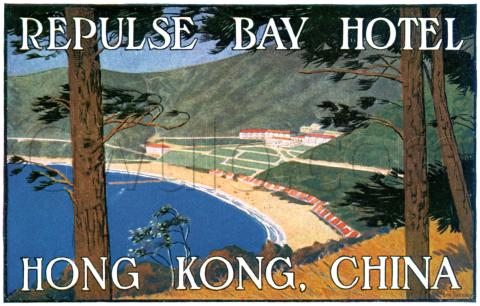

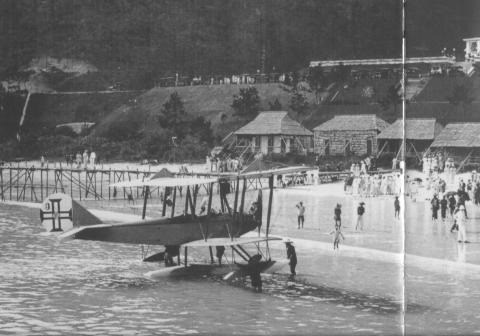
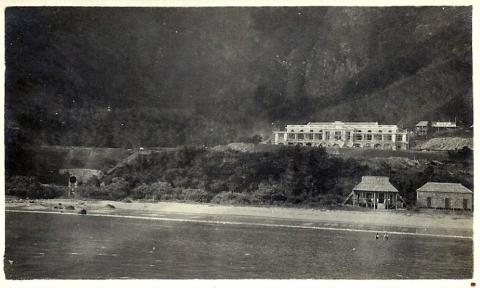
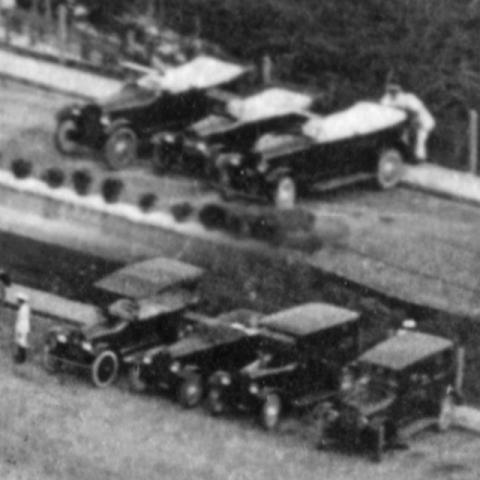
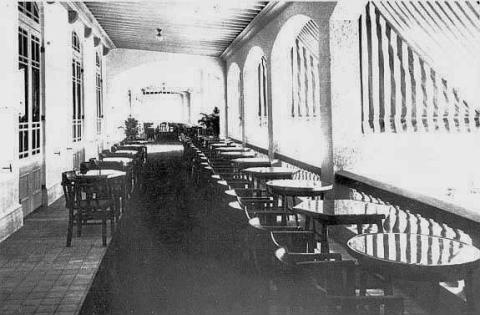
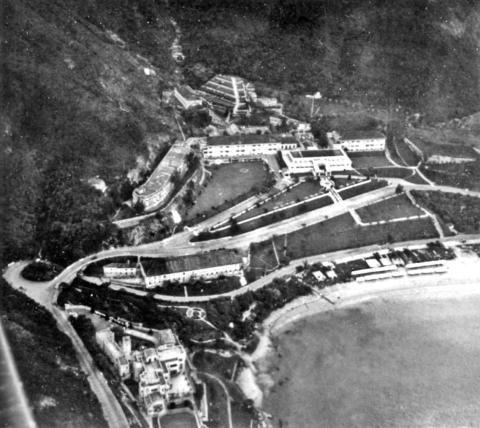

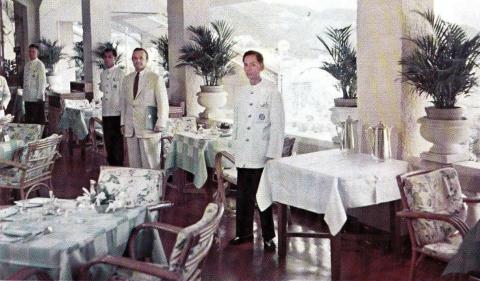
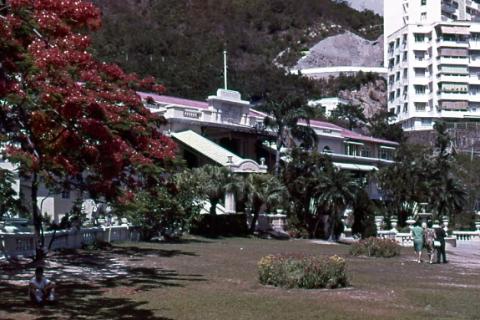
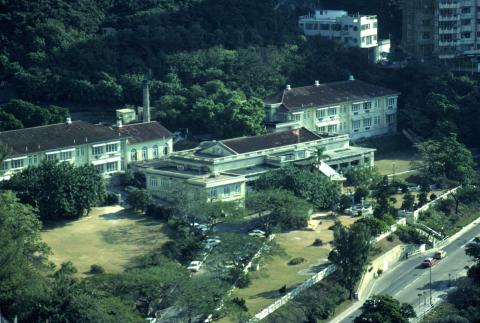
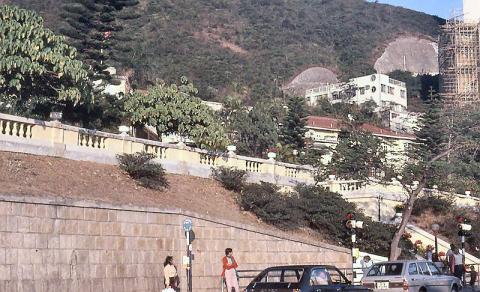
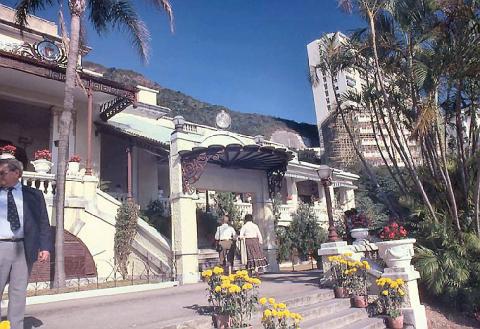


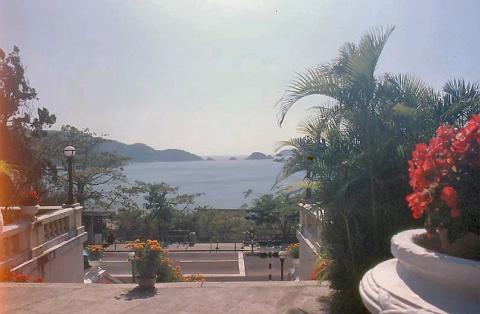
Comments
The Repulse Bay Hotel: Hong Kong's Grand old Lady
Thank you for republishing this very interesting article, I enjoyed reading it almost as much as my several visits to the hotel during my visits to Hong Kong in the 1970s.
Needless to say, I was incredulous when I heard that this important establishment, to those with any romantic sentiment at all, had been callously eliminated in the name of progress.
I can vividly recall swimming in the bay on a hot summer day, followed by a sumptuous and delicious buffet lunch washed down with ice cold Tsing Tao beer. On another occasion, during a winter visit, just having lunch and exploring the beautiful garden was more than adequate respite from the hustle and bustle happening on the other side of the island.
That this beautiful oasis should be eradicated is, to me, unthinkable but, that's the reality. We're fortunate to have the resources of Gwulo and others to keep the memories alive.
Repulse Bay Hotel
A most interesting article. I was particularly interested in the part which mentions the military leaving the hotel shortly before the surrender of the Colony, when they made their way to Stanley.
One of the civilians staying in the hotel at the time was American businessman, (and I guess one can say millionaire), Jan Marsmann. His family was very heavily involved, inter alia, with wolfram (tungsten ore) mining in the Needle Hill area of the New Territories and he was in the Colony on business when the Japanese invaded in Dec 1941.
Marsmann missed his early morning call at the Peninsular Hotel on the morning of 8 Dec 1941, which meant that the PanAm clipper moored at Kai Tak on which he was meant to be on board as a passenger never did take off. This meant that the plane couldn't be shot down in the air by attacking Japanese aircraft with resulting loss of life - although it was shot up and bombed at its mooring! Marsmann takes credit for saving those lives.
But the point I wanted to make is that in his very excellent book on this period which he wrote after he escaped from HK and reached the United States, Marsmann describes how the original decision was for the civilians to evacuate the hotel and make their way to Stanley. The military were to stay behind and fight it out. Marsmann states that this was a ridiculous idea and would have been suicidal. A far better suggestion was for the military to leave, and Marsmann writes that he personally telephoned the Garrison HQ's and verbally berated a senior staff officer until the decision was announced that the military would evacuate the hotel - NOT the civilians.
Another interesting hotel story during the battle is that after the military left the premises, a Canadian soldier was found to have been left behind - drunk as a lord, still wearing his uniform and accoutrements including his weapon. Who knows what the Japanese military would have done if they had found him like that - and not just to the soldier himself?
Others frantically pulled his uniform off him and dressed him in civvy clothing - hid his weapon - just before the Japs entered. The soldier was actually interned in Stanley as a civilian - not made a military POW - and was eventually repatriated to Canada. The Canadian authorities wanted to throw the book at him after the war, but the matter was eventually quietly dropped.
Love is a Many-Splendored Thing
I must admit, I can't remember a scene filmed here, if there was I don't think it made it to the final release of the film.
Love Is etc
Your words echo my thoughts, I was a bit puzzled also about that.
But, I have the DVD and will watch the movie (again) and check this.
Memories of the Repulse Bay Hotel
Thanks to readers who replied by email:
Cathy Chinery:
I remember being an extra, with my mum and some Naval Wives, in an episode of Warship filmed at The Repulse Bay Hotel in the '70s. We were also extras in a film at Run Run Shaw's Studios. This one was called The Empress Dowager. Always searching for it on DVD! We were also dressers for various actors, including Hannah Gordon, Christopher Cazanove and Keith Michell, who came out from UK to play Othello at The City Hall. We were part of a Naval Wives Amateur Dramatic Group... Me being a Naval daughter!
Great fun, but Repulse Bay holds fond memories in my heart and we have returned to swim when on holiday When I brought my own family to beautiful Hong Kong. To share happy memories of a few years growing up in Hong Kong.
Johnye Colling-Saylor:
In the late 50's and early 60's the hotel was managed by one of my fathers school mates from Tientsin . His name was Astrimoff. Can't remember first name. He was also a gentleman Jockey at the Jockey club
I also remember a family. The 'Wills', who lived in a small flat on the right side of the hotel. There were 2 small flats there connected to the hotel !
John Bechtel:
I have SUCH fond memories of time at the Repulse Bay Hotel when I was a young boy.. Michael Kadoorie and his sister were in KGV where I was head prefect in 1958. After school, when the red flag was flying at the beach indicating it was too rough to get in the water, we boarded the bus at the star ferry and headed out for Repulse Bay, Enormous memories of fun in the surf and then to the Hotel for a shower and a free Watson’s Orange drink from the staff as we could all speak Cantonese and they saw us often. We also used Michael’s name in vain to get something to eat..
Great days
The Repulse Bay Hotel
When I returned to HK in June 1946 to resume my job as stenographer with HKong Govt, I was first billeted at the Repulse Bay Hotel, sharing a room with another ex Stanley girl my own age. It seemed in good shape then, but as it cost me $1 each way to get to work each day, I successfully pleaded for a billet in the city, and transferred to the French Mission on Battery Path, Queens Rd central which had been taken over by HK Govt as an accommodation hostel for some of their employees. It was here that I really got to know Frank Anslow (whom I had only known by sight in Stanley) and married in 1948 I was delighted when visiting HKong in 2008 to see the French Mission building is still there.
By the way, in the article above, one sentence states that the women and children evacuated to Australia in 1940 drifted back in 1941.... This suggests that ALL drifted back then, but I think you will find that the majority remained in Australia until the war ended.
Barbara
Demolition
Why was the main building demolished but then rebuilt a few years later? Did they regret demolishing it? Or did they want the new one to accommodate new shops? It's strange to me because it seems that it was just a waste of resources, they could've kept the building and saved themselves some money.
Thanks!
-Brandon
Repulse Bay Hotel (demolition)
You really should direct your question to the owner of the Hong Kong & Shanghai Hotels group, the Kadoorie family. Suffice it to say that in my humble opinion, the decision to demolish the hotel and replace it with a "pastiche" of the original was made purely from a business perspectice. It's all about money.
Incidentally, at one time the Kadoorie family were going to knock down their other iconic hotel in the city, the Peninsular, but for reasons I won't go into here, such never happened.
There is more one could write on the matter of the hotels, but I feel that discretion dictates that a line be drawn under the subject. The old hotel, which many of us remember, was pulled down in the early 1980's. Let's leave it at that.